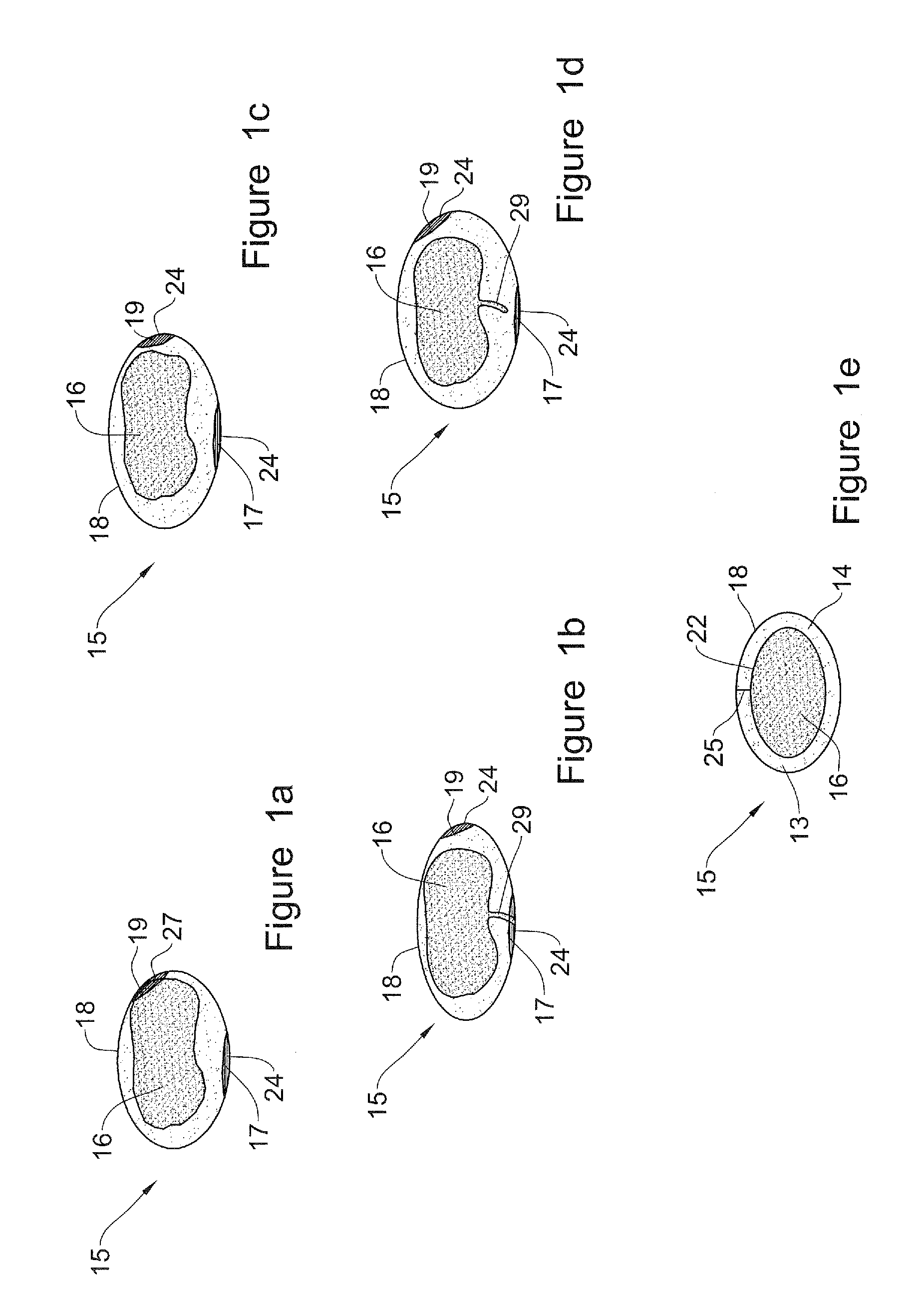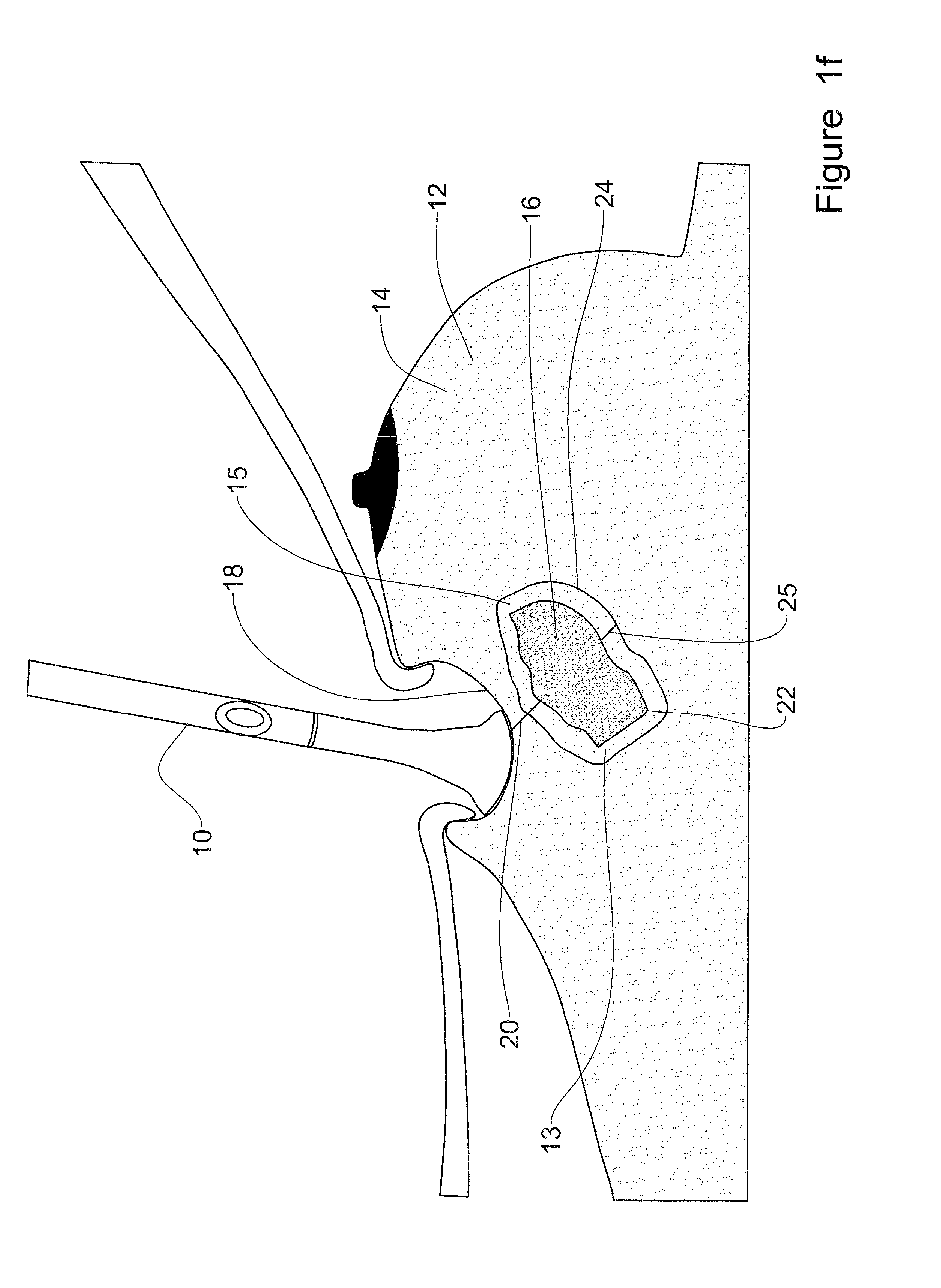Clean margin assessment tool
a technology of clean margins and assessment tools, which is applied in the field of medical tools, can solve the problems of inaccurate placement of guide wires, difficult to place guide wires at the correct depth, and radiation may not properly place guide wires through the lesion
- Summary
- Abstract
- Description
- Claims
- Application Information
AI Technical Summary
Benefits of technology
Problems solved by technology
Method used
Image
Examples
Embodiment Construction
[0194]The present invention is of an integrated tool having a tissue-type sensor, for determining the tissue type at a near zone volume of a tissue surface, and a distance-measuring sensor, for determining the distance to an interface with another tissue type. The tool is operable for (i) confirming an existence of a clean margin of healthy tissue around a malignant tumor, which is being removed, and (ii) determining the width of the clean margin, wherein both are performed in real time, while the malignant tumor is being removed. The tissue-type sensor may be selected from the following: a sensor for tissue electromagnetic properties, a dielectric sensor, an impedance sensor, a sensor for optical fluorescence spectroscopy, a sensor for optical reflectance spectroscopy, an MRI sensor, an RF sensor, an MW sensor, a temperature sensor, and infrared thermography sensor, or another tissue-characterization sensor, as known. The distance-measuring sensor may include at least one of the fo...
PUM
 Login to View More
Login to View More Abstract
Description
Claims
Application Information
 Login to View More
Login to View More - R&D
- Intellectual Property
- Life Sciences
- Materials
- Tech Scout
- Unparalleled Data Quality
- Higher Quality Content
- 60% Fewer Hallucinations
Browse by: Latest US Patents, China's latest patents, Technical Efficacy Thesaurus, Application Domain, Technology Topic, Popular Technical Reports.
© 2025 PatSnap. All rights reserved.Legal|Privacy policy|Modern Slavery Act Transparency Statement|Sitemap|About US| Contact US: help@patsnap.com



